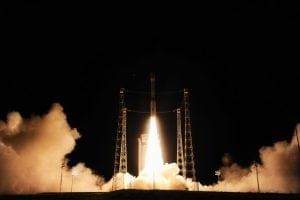Latest News
[Via Satellite 12-03-2015] Arianespace’s Dec. 2 Vega launch of the Lisa Pathfinder space probe fulfilled the final flight of the European Space Agency’s (ESA) Vega Research and Technology Accompaniment (VERTA) program to demonstrate the vehicle’s flexibility and versatility in a variety of mission types. The mission, Vega’s sixth, successfully delivered Lisa Pathfinder into an initial elliptical Earth orbit, following which the light-lift launch vehicle was declared ready for full operational status.
A multi-nationally financed ESA program created Vega, with Italy’s ELV company — a joint venture of Avio and the Italian Space Agency — serving as the launcher’s design authority and prime contractor. Vega completed three missions in 2015, launching the Sentinel 2A satellite and the Intermediate Experimental Vehicle (IXV) mission earlier this year.
Lisa Pathfinder is a scientific satellite designed to study gravitational waves — ripples in the fabric of spacetime, predicted a century ago by Albert Einstein’s General Theory of Relativity. During a subsequent step, this spacecraft will use its propulsion module to reach an operational orbit around the first Sun-Earth Lagrange point (L1), which is located approximately 1.5 million km from Earth. From there, Lisa Pathfinder is set to release a pair of identical 46 mm gold-platinum cubes separated by 38 cm, which will be isolated from all external and internal forces acting on them except one: gravity. An onboard interferometer is then to make extremely small distance measurements with the masses. The study is designed to evaluate the concept of low-frequency gravitational wave detection.
Lisa Pathfinder is expected to reach its operational orbit about 10 weeks after launch, in mid-February 2016. After final checks, it will begin a six-month scientific mission at the beginning of March.
Get the latest Via Satellite news!
Subscribe Now